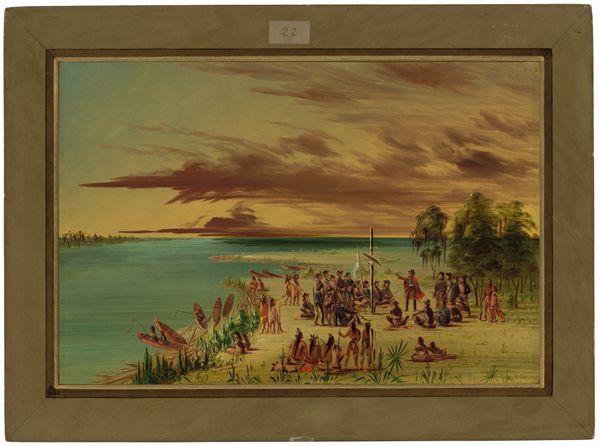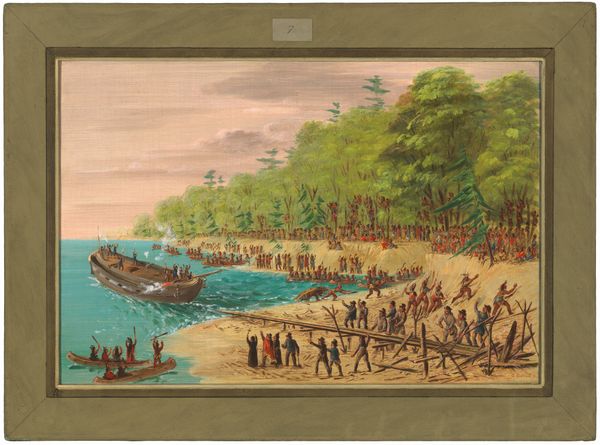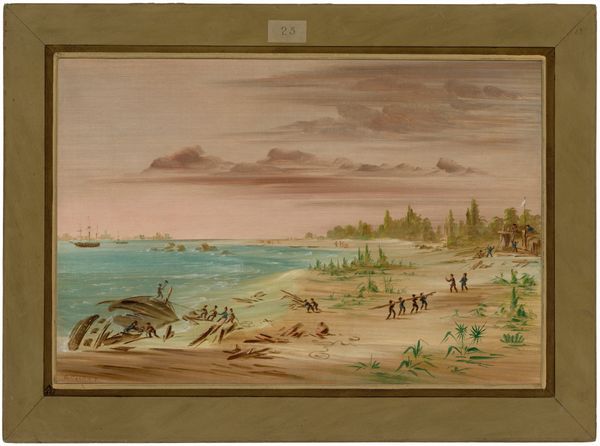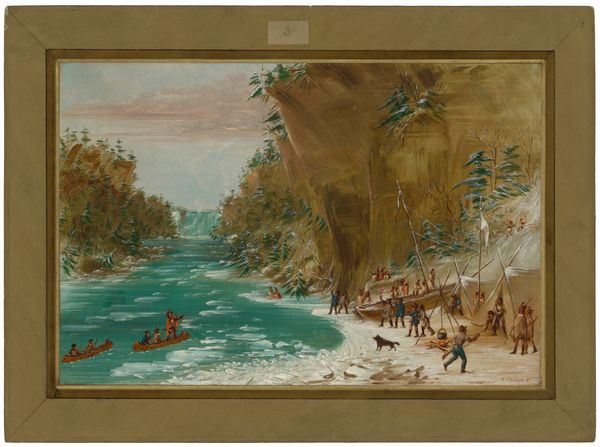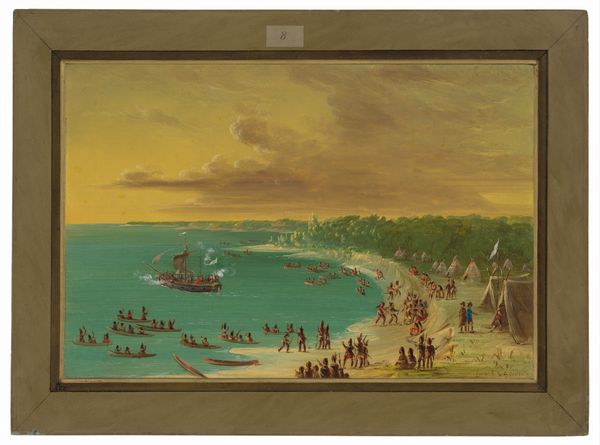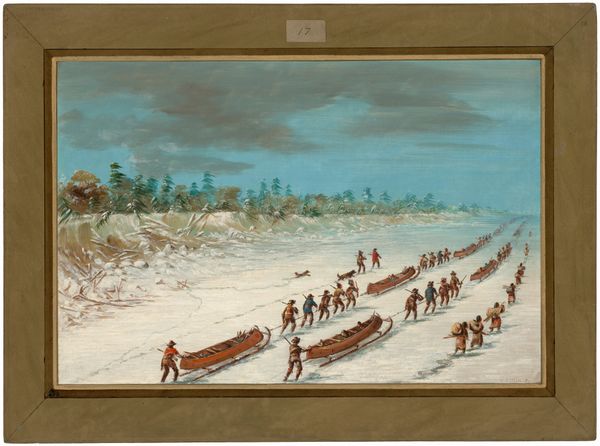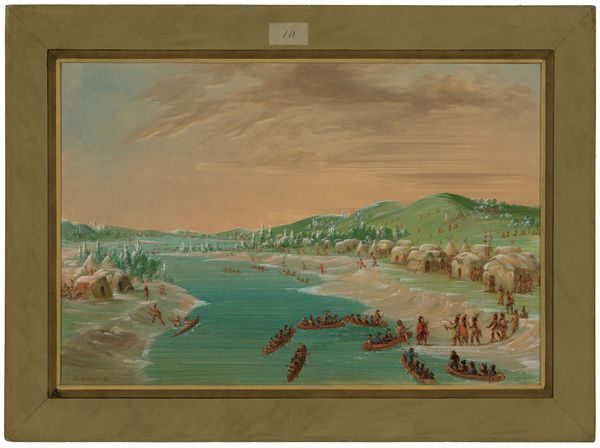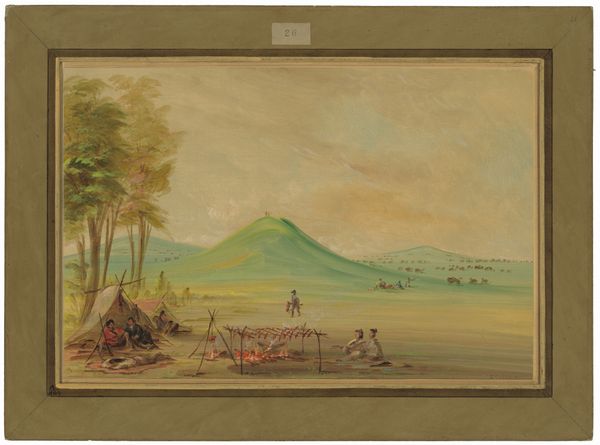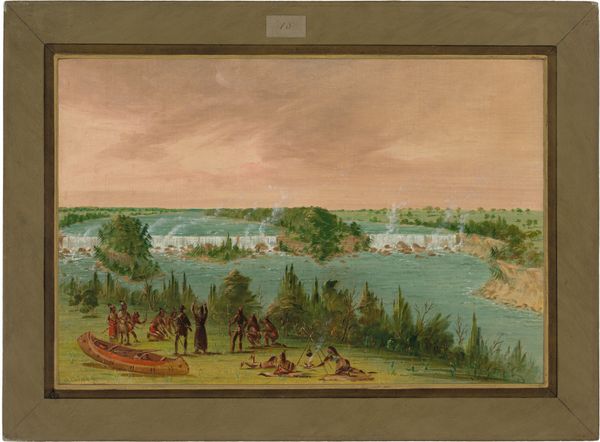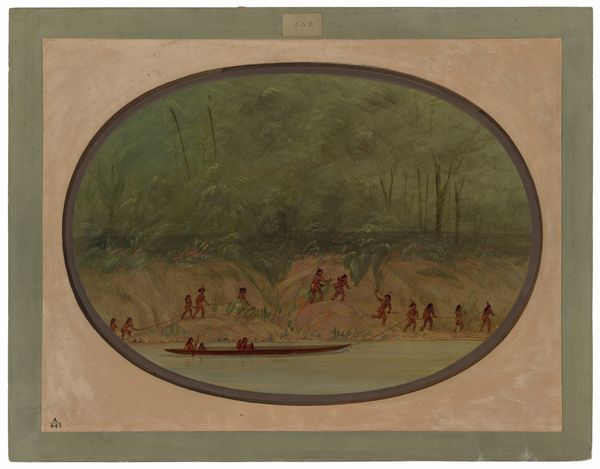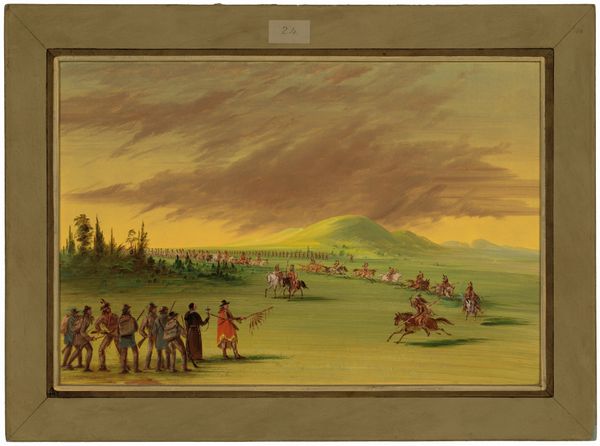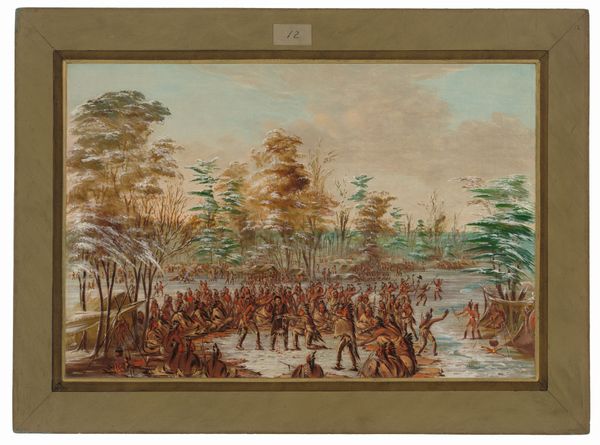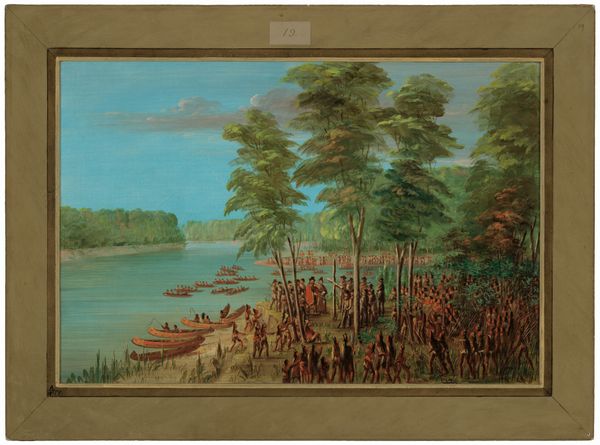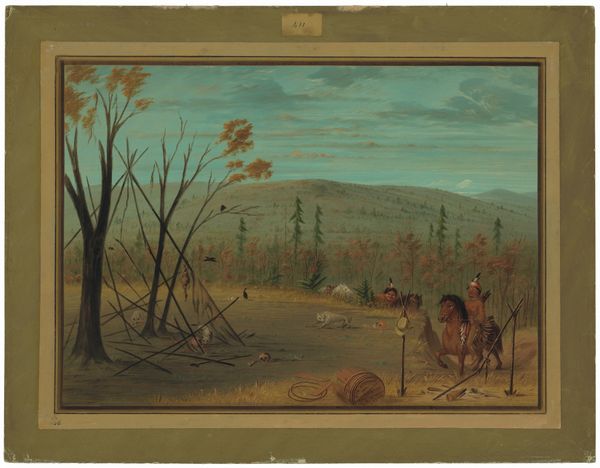
La Salle Driving the First Bolt for the Griffin. January 26, 1679 1847 - 1848
0:00
0:00
painting, watercolor
#
water colours
#
narrative-art
#
painting
#
landscape
#
handmade artwork painting
#
watercolor
#
genre-painting
#
history-painting
Dimensions: overall: 37.8 x 56.3 cm (14 7/8 x 22 3/16 in.)
Copyright: National Gallery of Art: CC0 1.0
Editor: Here we have George Catlin’s watercolor, "La Salle Driving the First Bolt for the Griffin, January 26, 1679," painted between 1847 and 1848. The pale colors give it a hazy, dreamlike quality. What can you tell us about this work? Curator: I see here a fascinating depiction of resource extraction and its immediate social impact. Catlin, through watercolor, documents not simply an event, but the very beginning of an industrial project imposed upon a landscape already occupied and utilized. Editor: Industrial project? Can you elaborate on that? Curator: Certainly. We see the European figures constructing the Griffin, which wasn't just a boat; it represented the imposition of European trade networks, resource control, and the reorganization of labor onto the Great Lakes region. The trees, the water – these are all raw materials. Editor: And the Indigenous people? Curator: Notice how Catlin positions them – watching from the sides, or arriving by canoe. Are they participating in this construction? Or are they witnesses to their changing environment? Think about how Catlin’s own process of making this painting reflects a similar act of observation and representation. Editor: So the materials used, like watercolor, contribute to understanding the piece’s meaning? Curator: Precisely. Watercolor was often used for documentation. Catlin is presenting his *interpretation* of a historical document, layered with his own biases and situated within the context of burgeoning industrial expansion. It also raises questions about who benefits from that industry and at what cost. What does progress actually mean in this instance? Editor: That’s given me a completely new perspective. I hadn’t considered the role of raw materials or the industrial context before. Curator: Considering art in its social and material context opens up entirely new avenues of understanding.
Comments
No comments
Be the first to comment and join the conversation on the ultimate creative platform.
